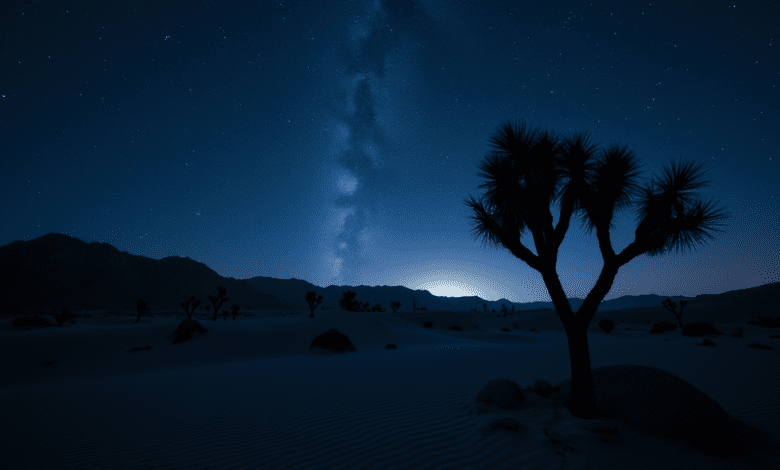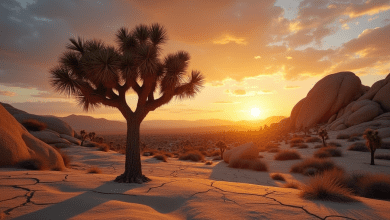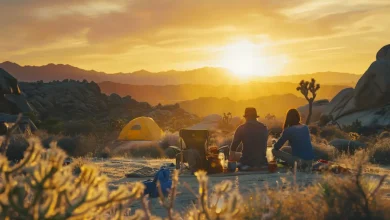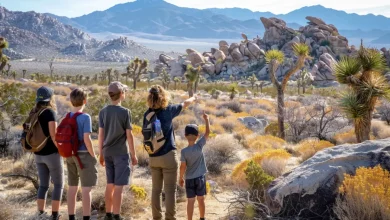Experience the Milky Way: A Stargazing Guide to Joshua Tree National Park

Can You See the Milky Way in Joshua Tree National Park?
Joshua Tree National Park is one of the most stunning natural wonders in the United States, known for its unique Joshua trees, breathtaking landscapes, and mesmerizing night skies. For stargazers and astronomy enthusiasts alike, the question often arises: Can you see the Milky Way in Joshua Tree National Park? The answer is a resounding yes! In this article, we’ll explore the best times to catch a glimpse of the galaxy, tips for stargazing, and highlights of what to experience in this remarkable park.
Understanding the Night Sky
Before we dive into the specifics of Joshua Tree, it’s essential to understand what makes stargazing in national parks so special. In many urban areas, light pollution obscures the beauty of the night sky, limiting visibility. However, Joshua Tree National Park is classified as an International Dark Sky Park, meaning it offers some of the darkest skies in Southern California. This designation makes it an ideal location for various astronomical phenomena, including the breathtaking view of the Milky Way galaxy.
The Best Time to See the Milky Way in Joshua Tree
While the Milky Way can be seen at various times throughout the year, the best months for viewing in Joshua Tree are typically from late spring to early fall, specifically from March through November. During these months, the Milky Way is more visible due to its position relative to the Earth’s rotation.
Optimal Viewing Conditions
- New Moon Phases: To catch a clear view of the Milky Way, plan your visit around the new moon when the sky is darkest.
- Clear Skies: Check the weather forecast for clear skies free of clouds.
- Late Night Hours: The best time to stargaze is usually between midnight and 2 AM when light from the sun has completely faded.
Iconic Stargazing Locations in Joshua Tree
Joshua Tree National Park has several designated areas perfect for observing the nighttime sky. Here are a few prime locations to consider:
Hidden Valley
A popular spot among both campers and hikers, Hidden Valley offers ample space for stargazing. The valley’s rock formations provide a stunning backdrop against the vast night sky.
Jumbo Rocks Campground
Located near some of the park’s most scenic rock formations, Jumbo Rocks Campground is another ideal location for stargazing. The clear vistas and minimal light pollution make it perfect for catching a glimpse of the Milky Way’s core.
Keys View
If you’re looking for an elevated spot, Keys View provides a panoramic view of the Coachella Valley and beyond. Pack a warm jacket, as temperatures can drop at night, and get ready for a spectacular view of the stars.
Tips for an Unforgettable Stargazing Experience
- Bring the Right Gear: A good pair of binoculars or a telescope can enhance your experience, but often, the naked eye is all you need to appreciate the beauty of the Milky Way.
- Use Stargazing Apps: Consider downloading stargazing apps like Star Walk, SkySafari, or Star Chart to help you identify constellations and planets.
- Capture the Moment: If you’re passionate about photography, bring a DSLR camera with a tripod to capture stunning images of the night sky. Long exposure shots can beautifully illustrate the brilliance of the stars.
- Stay Safe: Bring plenty of water, wear appropriate clothing, and follow park regulations to ensure a safe and enjoyable visit.
Conclusion
In conclusion, Joshua Tree National Park is a haven for those seeking to experience the magnificence of the Milky Way and the cosmos. With its minimal light pollution, diverse landscapes, and optimal viewing conditions, the park provides the perfect setting for a night of stargazing. So grab your friends or family, plan your trip around the new moon, and prepare for an unforgettable experience under the stars! Whether you’re an experienced stargazer or a curious beginner, the night sky will leave you in awe of its beauty.




